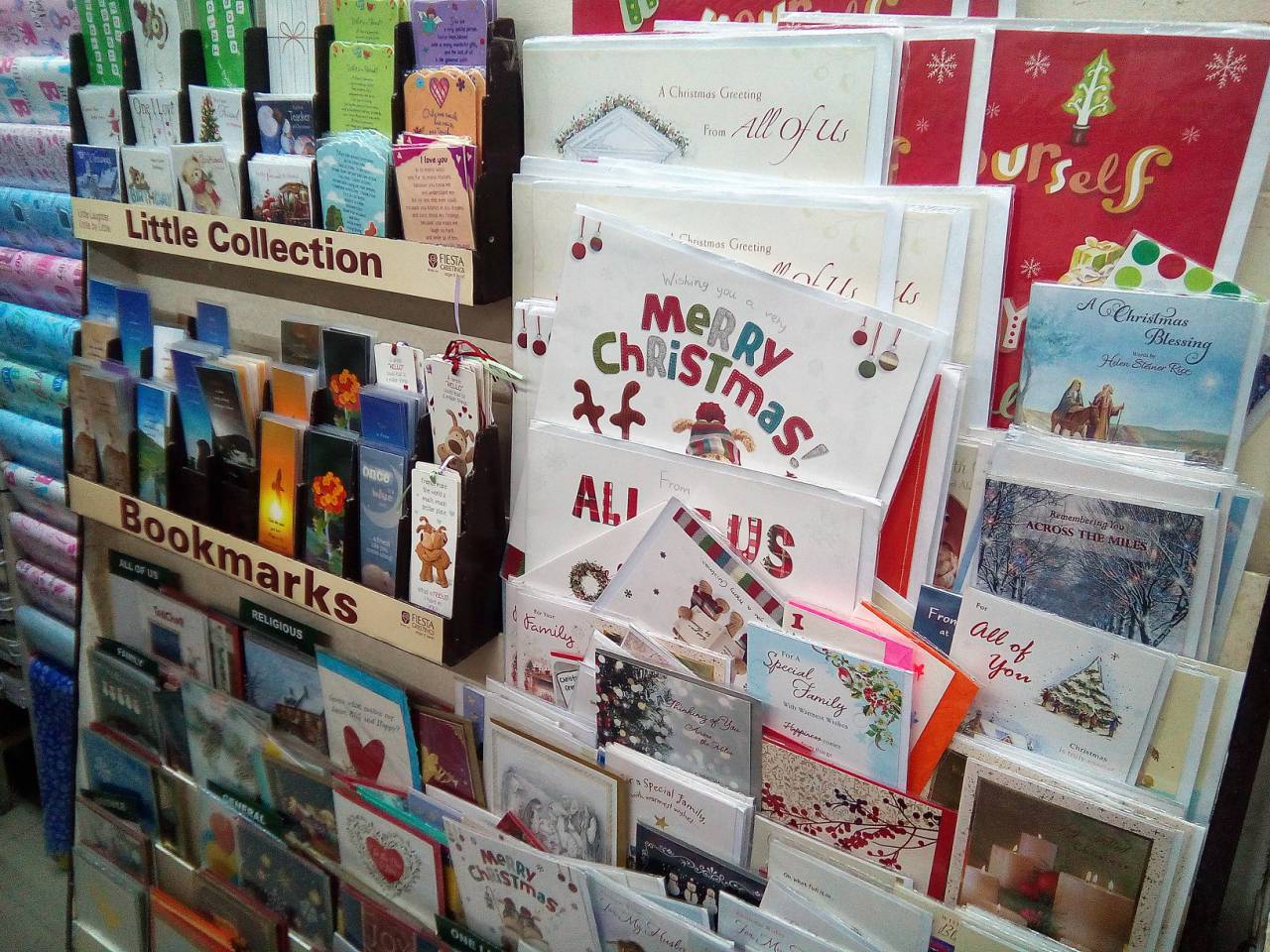
Christmas cards in bookstores. (PNA photo)
MANILA -- Holiday e-cards, e-mails, and memes are great, but some millennials say that they still prefer receiving traditional Christmas cards over anything that could be sent at the click of a button simply because it requires more effort to do so.
“It would be a pleasant surprise receiving a Christmas card nowadays,” says 27-year-old Precious Maypa, a medical coder.
Precious said that the last time she remembers receiving a Christmas card was when she was about 10 or 11-years-old. It was from her grandmother who lives in Canada.
Perhaps it would be safe to say that most Christmas cards being sent mostly come from abroad.
Chenny Ramos, 25, story supervisor, says that the last person who sent her a Christmas card was her mother, who used to work in South Korea. She received the card in 2007.
“It had cash and photos included,” Chenny recalls noting that she would want to receive a card again, but wouldn’t expect any since her mother now lives with her in the Philippines.
“Sure, there’s Facebook and e-mail, but traditional cards are just more personal. It’s your penmanship you put it there after all,” Chenny says.
Rosette Adel, 27, reporter, says she also receives annual Christmas cards from a friend from the US.
“The cards go with gifts and packages. I still want to receive cards because it makes me feel remembered,” Rosette says.
Timothy Unson, 26, inventory allocation planning analyst, also says the last time he received a card was in his teenage years, from a relative from the US.
He says she would still want to receive one because although it might be called “old-fashioned,” it was also “nostalgic”
“In this age where one can simply PM (private message) someone or send them an e-mail, something old-fashioned feels nostalgic. It feels more personal that a person put time and effort into selecting a card, writing a heartfelt message, and sending it,” Tim says.
Digital greetings
Twenty-six-year-old Christian Matic, human resource department employee, says although less personal, e-cards, short for electronic cards or even memes are also welcome because “It’s the thought that counts.”
However, he says he also prefers not just receiving but also sending traditional cards himself--not just on Christmas but on other special occasions.
“Sending cards is just something my family members used to do when I was little and I still try my best to continue doing that,” Christian says noting that he felt like giving gifts felt more sincere if accompanied with a card.
“I always make it a point to include a card or note when I give someone a gift but I guess people don’t think that much of it anymore,” he adds noting that e-cards or electronic cards are easier to send.
Monica Castro, 27, a senior marketing associate, however, thinks e-cards are lame.
“They’re as good as spam,” Monica, who appreciates traditional cards and drawings over e-cards despite admitting that she hasn’t sent a traditional card herself.
“I remember receiving one in elementary when I was around nine or 10,” Monica says pointing out that she learned letter-writing in her grade school English classes.
Carl Plete, 27, IT developer, says e-cards would easily get lost among other e-mails and messages.
“Traditional cards are still better, they have less a chance of getting lost and it kind of means ‘I took effort to send you something,’” Carl says.

Christmas clutter
Not all millennials like receiving Christmas cards -- some of them think they’re just clutter.
Zachary Tan, 26, former aircraft mechanic, acknowledges that they do have personal value, but wouldn’t really know what to do with “generic” cards he receives.
Insurance companies, bank suppliers, and other related firms still send Christmas cards, says civil engineer and contractor Emily Kalaw, 57.
Emily, however, does not belong to the millennial generation and admits having the intention to send cards but not being able to do them as consistently anymore.
“I still have cards I as meaning to send but they’re neglected on my desk,” she says noting that she did not have time to write dedications on them.
She says she also finds it difficult to go through her list of addresses, unsure they’re still updated.
“It’s a different story when I was younger,” she says. “In the 1970s until 80s, I remember receiving cards from suitors, and my then boyfriend.”
A 2015 TIME article (see: This Is How Much People Still Spend on Christmas Cards) claimed that despite “the world’s digital tilt” the card industry is still thriving because e-cards or e-mails don’t carry “the same emotional weight.”
Citing an IBIS World analyst, TIME said that that the card industry in the US is “declining at about 5 percent per year, but that card sales have held steady despite the profits that have diminished due to less-lucrative digital versions.”
Meanwhile, about 1.6 billion cards continue being sold according to the US’ Greeting Card Association.
Christmas cards in the Philippines cost PHP20-40 depending on the design. The larger cards cost less than PHP100.
Figures for card sales in the Philippines are not readily available, but greeting card companies Hallmark Philippines and Fiesta Greetings released their Christmas card collection early this month and some designs are already out of stock, according to sales ladies. That alone speaks volumes. (PNA)
